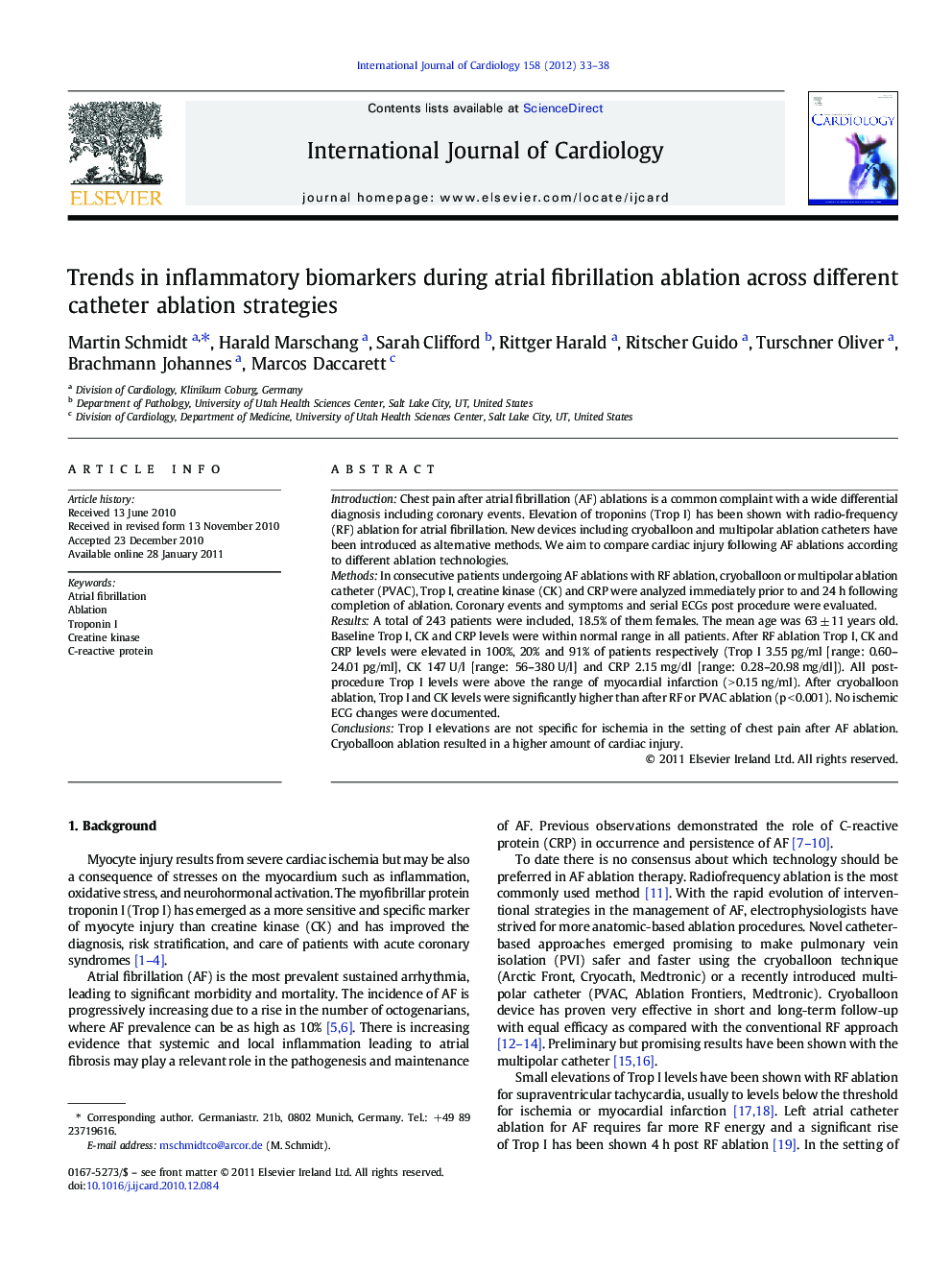| Article ID | Journal | Published Year | Pages | File Type |
|---|---|---|---|---|
| 5978437 | International Journal of Cardiology | 2012 | 6 Pages |
IntroductionChest pain after atrial fibrillation (AF) ablations is a common complaint with a wide differential diagnosis including coronary events. Elevation of troponins (Trop I) has been shown with radio-frequency (RF) ablation for atrial fibrillation. New devices including cryoballoon and multipolar ablation catheters have been introduced as alternative methods. We aim to compare cardiac injury following AF ablations according to different ablation technologies.MethodsIn consecutive patients undergoing AF ablations with RF ablation, cryoballoon or multipolar ablation catheter (PVAC), Trop I, creatine kinase (CK) and CRP were analyzed immediately prior to and 24 h following completion of ablation. Coronary events and symptoms and serial ECGs post procedure were evaluated.ResultsA total of 243 patients were included, 18.5% of them females. The mean age was 63 ± 11 years old. Baseline Trop I, CK and CRP levels were within normal range in all patients. After RF ablation Trop I, CK and CRP levels were elevated in 100%, 20% and 91% of patients respectively (Trop I 3.55 pg/ml [range: 0.60-24.01 pg/ml], CK 147 U/l [range: 56-380 U/l] and CRP 2.15 mg/dl [range: 0.28-20.98 mg/dl]). All post-procedure Trop I levels were above the range of myocardial infarction (> 0.15 ng/ml). After cryoballoon ablation, Trop I and CK levels were significantly higher than after RF or PVAC ablation (p < 0.001). No ischemic ECG changes were documented.ConclusionsTrop I elevations are not specific for ischemia in the setting of chest pain after AF ablation. Cryoballoon ablation resulted in a higher amount of cardiac injury.
